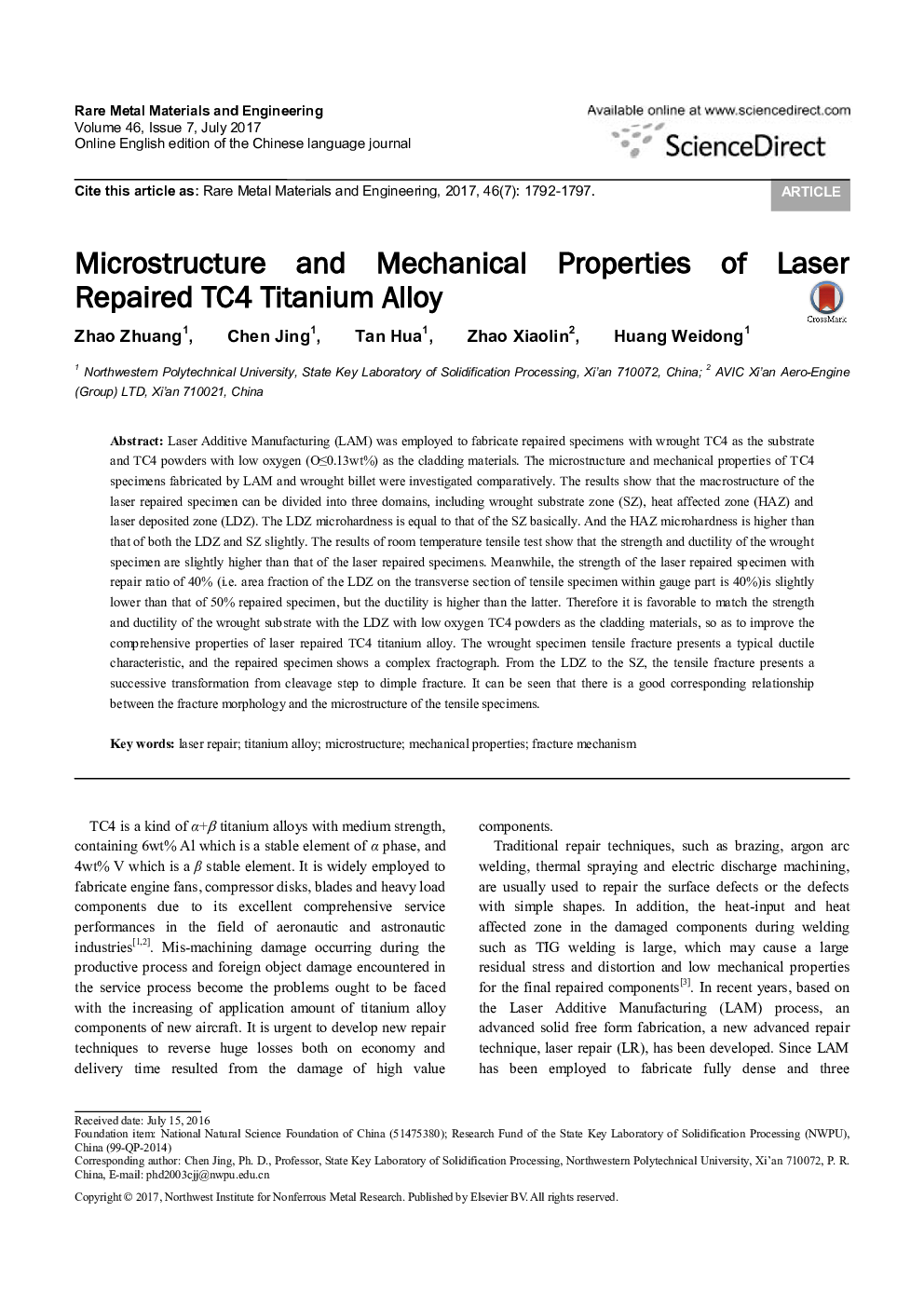| Article ID | Journal | Published Year | Pages | File Type |
|---|---|---|---|---|
| 7210325 | Rare Metal Materials and Engineering | 2017 | 6 Pages |
Abstract
Laser Additive Manufacturing (LAM) was employed to fabricate repaired specimens with wrought TC4 as the substrate and TC4 powders with low oxygen (Oâ¤0.13wt%) as the cladding materials. The microstructure and mechanical properties of TC4 specimens fabricated by LAM and wrought billet were investigated comparatively. The results show that the macrostructure of the laser repaired specimen can be divided into three domains, including wrought substrate zone (SZ), heat affected zone (HAZ) and laser deposited zone (LDZ). The LDZ microhardness is equal to that of the SZ basically. And the HAZ microhardness is higher than that of both the LDZ and SZ slightly. The results of room temperature tensile test show that the strength and ductility of the wrought specimen are slightly higher than that of the laser repaired specimens. Meanwhile, the strength of the laser repaired specimen with repair ratio of 40% (i.e. area fraction of the LDZ on the transverse section of tensile specimen within gauge part is 40%)is slightly lower than that of 50% repaired specimen, but the ductility is higher than the latter. Therefore it is favorable to match the strength and ductility of the wrought substrate with the LDZ with low oxygen TC4 powders as the cladding materials, so as to improve the comprehensive properties of laser repaired TC4 titanium alloy. The wrought specimen tensile fracture presents a typical ductile characteristic, and the repaired specimen shows a complex fractograph. From the LDZ to the SZ, the tensile fracture presents a successive transformation from cleavage step to dimple fracture. It can be seen that there is a good corresponding relationship between the fracture morphology and the microstructure of the tensile specimens.
Related Topics
Physical Sciences and Engineering
Engineering
Mechanics of Materials
Authors
Zhao Zhuang, Chen Jing, Tan Hua, Zhao Xiaolin, Huang Weidong,
